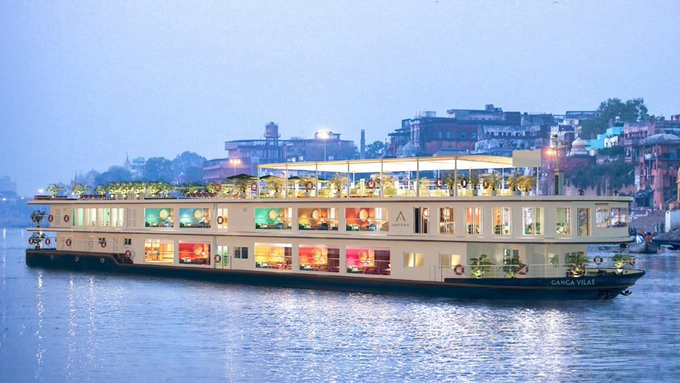Prime Minister Narendra Modi will flag off the world’s longest river cruise, MV Ganga Vila, today. The cruise is set to cover a distance of 1,612 km from Allahabad to Kolkata, along the Ganges river. The cruise is expected to take around 25 days to complete and will cover several important religious and cultural sites along the way.
This river cruise is a major step towards promoting tourism and cultural heritage of the country. The cruise will pass through several important cities and towns, including Patna, Varanasi, and Kolkata, and will offer passengers a chance to experience the rich cultural heritage and natural beauty of the region. The cruise will also feature several onboard activities, including yoga and meditation sessions, dance and music performances, and cooking classes.
The MV Ganga Vila is equipped with modern amenities and facilities to ensure a comfortable journey for the passengers. The ship has a capacity of around 100 passengers and features luxurious cabins, an onboard restaurant, a spa, and a fitness center.
This initiative is also expected to boost the economy of the region as it will generate employment opportunities and increase revenue for local businesses.
The Ganges river is considered as one of the most sacred rivers in India and is of great religious significance. The river is considered as the lifeline of northern India, providing water for irrigation, drinking, and other purposes. The river is also home to a wide variety of flora and fauna and is considered as an important ecosystem.
This river cruise initiative is a step towards promoting sustainable tourism and preserving the cultural heritage of the region. The cruise will offer passengers a chance to experience the rich cultural heritage and natural beauty of the region, while also promoting sustainable tourism practices.
In conclusion, the river cruise initiative is a major step towards promoting tourism and cultural heritage of the country. The cruise will offer passengers a chance to experience the rich cultural heritage and natural beauty of the region, while also promoting sustainable tourism practices. It’s also expected to boost the economy of the region as it will generate employment opportunities and increase revenue for local businesses.



